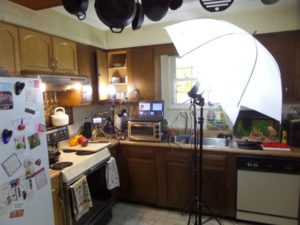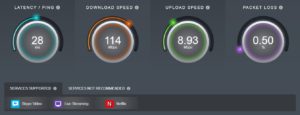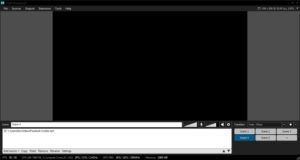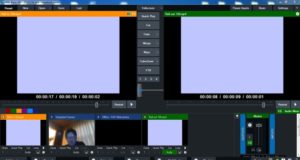FACEBOOK LIVE BROADCASTING 2
 In Facebook Live Beer Budget Broadcasting 2, we delve into some of the technical aspects of Facebook Service and some cool software. This by no means comprehensive, but just a peek into our experiences.
In Facebook Live Beer Budget Broadcasting 2, we delve into some of the technical aspects of Facebook Service and some cool software. This by no means comprehensive, but just a peek into our experiences.
In part 1 of this series, we reviewed the equipment used for our set up. In this part we’ll start by taking a look at some of the technical issues involved in live streaming and some of the bottlenecks you could run into.
Let’s begin by taking a look at the components required for successful broadcasting . These are things to consider no matter what you have on the broadcasting end.
Networking
Face it, live streaming is taxing on both equipment and network capabilities. And the best equipment you can procure is all for naught if the network isn’t up to snuff. So lets take a look at some conservative estimates for live streaming. And to do that, we’ll take a look at Facebook’s Live API Best Practices. For SD (640×360) you’ll need at least 3Mbps down and 1.5 Mbps up. For HD (1280×720) you’ll need 5 Mbps up and 5 MBps down. In reality, you’ll need to double the speeds to retain a consistent stream. And stick to a wired connection as far as possible. Test it first. If it’s not up to snuff you’ll have problems. There are a lot of places to check, bu I prefer Slashdot’s Speed test.

Resolution
Facebook live is heavily targeted at mobile devices at the receiving end. So unless the primary target is a desktop HD, there’s no use doing an HD live stream. Besides. no mater what you do, the live stream always starts at 640×360 regardless. SD looks perfectly well on a mobile and OK if you’re using a desktop. As long as you’re not sitting directly on top of the screen.
Audio
There’s an old saying for Audio / Video productions along the lines of “If the sound man isn’t smiling, nobody is”. And for good reason. You can ruin a perfectly good video with poor sound. People seem to far more critical of audio than video. Purple people are OK, but bad audio is intolerable. And yet it seems to put at the bottom of the list when it come to production. Concentrate on this before live streaming.
Software
Here’s a list of the software products we looked at for our live streaming. They’re all very capable but on slower hardware there’s a lot of trade offs to consider. Video processing is labor intensive, but if you work it right you can get a good stream even if the processor is running at 97% load as was ours. Never skipped a beat on the end result. So Here’s our list:
1. Wirecast by Telstream packs a lot of punch for live broadcasting. It’s also expensive if you’re just doing one off videos, and probably not suitable for occasional use. When you’re ready to turn Pro, well worth a look. Not suitable for the equipment we are using.

2. Open Broadcaster is a free streaming software package that works reasonably with Facebook live. Like most Open Software projects, the burden will be on you to get it to work. Be prepared to do some experimentation with the video and audio bit rates. The current version is very resource intensive and just didn’t produce the desired results.

3. XSplit is popular with Gamer broadcasting, which is what it’s geared for. Worth a look if you’re doing if your heavy into gaming, with some video added on. You’ll need a subscription if you exceed the predetermined number of inputs. It was also labor intensive for the equipment being worked with, and just wouldn’t produce a consistent stream.

4. Vmix is what we settled on for our productions. First, it’s a Windows only package which takes some burden off supporting multiple platforms. Second, the minimum hardware specifications matched the hardware on hand. And finally, it just worked. It’s not free, but they have a generous 60 day trial of the full featured product. Like some other software it’s tiered to the number of inputs. But, it’s a one time license fee at a very good price. If your adept at video editing, it’s not hard to work around the input limitations.

Other Handy Software
A couple other items you might want to have on hand along with your streaming software is a video editor and a graphics package. So here’s my picks for the free end of things. You can always upgrade as you see fit.
VSDC Free Video editor. Very handy to create video snips for your streaming production. Takes some getting used to but it’s good to have on hand.
Paint.net is a free graphics editing program with a lot of capabilities. Free to download, and if you like it consider giving the author a donation.
In Conclusion
We’ve covered most of the basics for Facebook Live assuming you’re not just planning on using a mobile device for your live broadcasts. In part 3 of this series, we’ll cover getting the whole schmeer up and running and some production tips.. Stay tuned.

Recent Comments